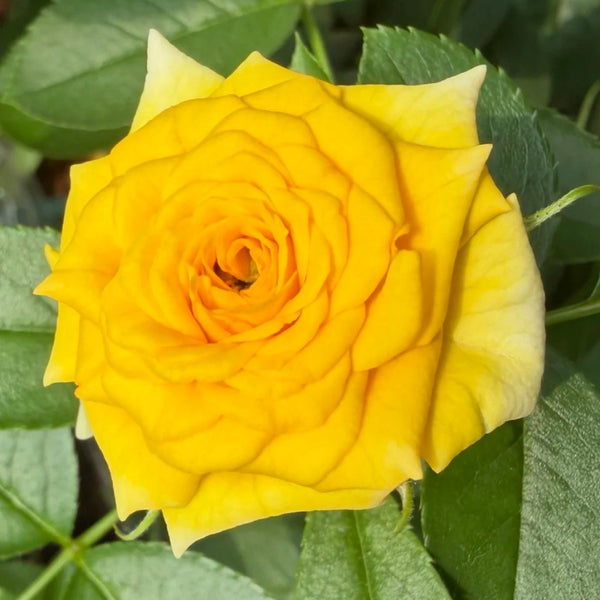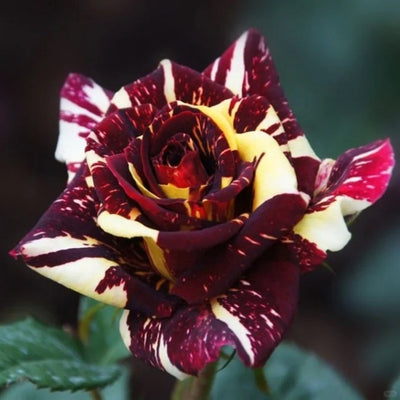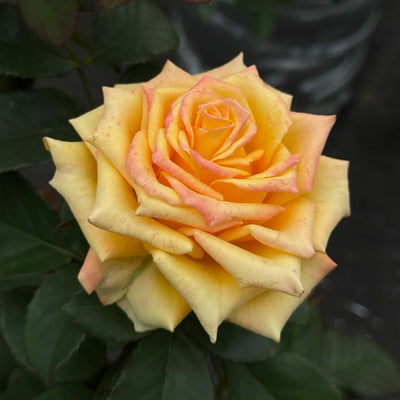The Rose Breeding Process of Colin Dickson at Dickson Nurseries
Colin Dickson, a sixth-generation rose breeder, operates Dickson Nurseries in Northern Ireland, one of the world's oldest and most prestigious rose breeding companies. The nursery has been cultivating roses since 1836, and their breeding process has been refined over the generations. Here, we explore the key stages of Colin Dickson's breeding process, shedding light on the methods, timelines, and dedication involved in creating some of the world's most admired rose varieties.
1. How Many Crosses Are Made Each Year?
At Dickson Nurseries, the breeding season begins in mid-April and lasts until the end of June. During this 10-week period, the number of crosses made annually typically ranges between 8,000 and 15,000. This large number ensures that a diverse genetic pool is created, increasing the chances of developing unique and resilient rose varieties.
2. How Many Seeds Are Sown?
After the crosses are made, the resulting seeds are collected and sown. Each year, Dickson Nurseries sows up to 150,000 seeds. However, only about 750 seeds are selected for further evaluation. The seeds are harvested from mid-September to November, and once sorted by hybrid, they are sown in the nursery in January. The germination rate is typically around 60-70%, with the first flowers appearing by April. During the months leading up to July, these seedlings are evaluated daily to determine which ones show promise for future cultivation.
3. How Long Does It Take to Introduce a New Variety?
Rose breeding is a long and meticulous process, with new varieties taking anywhere from 8 to 10 years to be introduced to the market. For example, roses hybridized in 2008 may not appear in the nursery's catalog until after 2016. During each breeding season, typically only four new varieties are selected to be introduced. This careful, deliberate process ensures that each new variety is thoroughly tested and meets the high standards set by Dickson Nurseries.
4. Can New Varieties Be Named by the Public?
Yes, new rose varieties bred by Dickson Nurseries can be named by the public, although there are different ways to go about it, depending on the budget and preference of the person or group interested in the name.
-
Option 1 (The Most Affordable): This option offers 50 plants and a certificate of authenticity. The plants are tested for at least two years, and buyers can choose their color preference. These roses are a unique, high-quality addition to any garden.
-
Option 2 (Intermediate): This option allows the variety to be included in Dickson's catalog, available for public purchase. The price is higher, reflecting the broader availability of the rose.
-
Option 3 (The Most Expensive): This option is the most exclusive. The rose variety will be offered to growers nationwide to be included in their catalogs. The process takes longer, as it involves application for plant breeders' rights in the UK. This option guarantees that the rose variety will be widely available but also comes with a much higher price tag.
5. How Long Has Your Company Been Breeding Roses?
Dickson Nurseries has been breeding roses since 1879, although the family has been growing roses since 1836. Colin Dickson, the current leader, is the sixth generation of his family to continue the tradition of rose breeding. The nursery’s long history is a testament to their dedication to producing high-quality roses, and their commitment to innovation ensures that they remain at the forefront of the industry.
The Breeding Process: Step-by-Step
Dickson Nurseries follows a highly detailed and structured breeding process to ensure that each rose produced is of the highest quality. Here is a simplified overview of the breeding process:
- Winter Hybridizing House – In winter, the hybridizing process begins, with the selection of mother plants and pollen.
- Hybridizing in May – By May, the hybridization process continues with pollination and emasculation of flowers.
- Mother Plants – Carefully selected parent plants are kept in optimal conditions to ensure the best crosses.
- Emasculating in the Morning – The process of emasculation, or removing the stamens from the flower, is done in the morning for precision.
- Pollination in the Afternoon – In the afternoon, the cross-pollination process takes place.
- Maturing Hips – The fertilized flowers develop into hips, which are carefully monitored until they mature.
- Harvesting Hips – The mature hips are harvested, each labeled with the pollen parent information.
- Extracting Seeds – After harvesting, the seeds are carefully extracted from the hips.
- Seedling House Before Sowing – The extracted seeds are then placed in the seedling house before sowing.
- Seedling House After Sowing – The seeds are sown and the seedlings are carefully monitored for growth.
- Germinating Seedlings – The seedlings begin to sprout in late winter or early spring.
- Seedling House a Few Weeks Later – After a few weeks, the seedlings grow stronger and are evaluated for their potential.
- Full Flowering in Seedling House – The seedlings are now in full bloom, showing their true characteristics.
- Cutting the Bud – After evaluating the seedlings, the buds that show promise are selected for further propagation.
- Trimming the Bud – The buds are carefully trimmed and prepared for insertion onto rootstock.
- Inserting Buds – The buds are grafted onto rootstocks, a critical step in the breeding process.
- Budding and Patching – The grafted buds are patched securely to ensure proper growth.
- Budded Field Before Cutting Back – The newly budded plants are maintained in the field, ready for cutting back.
- Budded Field Early Spring – In early spring, the plants begin to grow stronger.
- Growing Plants – The plants are carefully nurtured and grown to maturity.
- Young Plants – These young plants are now ready for evaluation and selection.
- Summer Rose Field – By summer, the plants are thriving in the nursery’s rose fields, ready to bloom.
This thorough, year-round process results in the creation of beautiful and resilient rose varieties, which are then tested, evaluated, and eventually made available to the public.
Conclusion
The rose breeding process at Dickson Nurseries is a careful, multi-step journey that requires patience, precision, and passion. Colin Dickson’s commitment to quality and innovation ensures that each new variety of rose not only meets the highest standards but also contributes to the legacy of rose breeding that has been in his family for generations. Whether through hybridization, grafting, or testing, the nursery continues to push the boundaries of what’s possible in rose cultivation, offering gardeners around the world access to some of the finest roses available.
















































